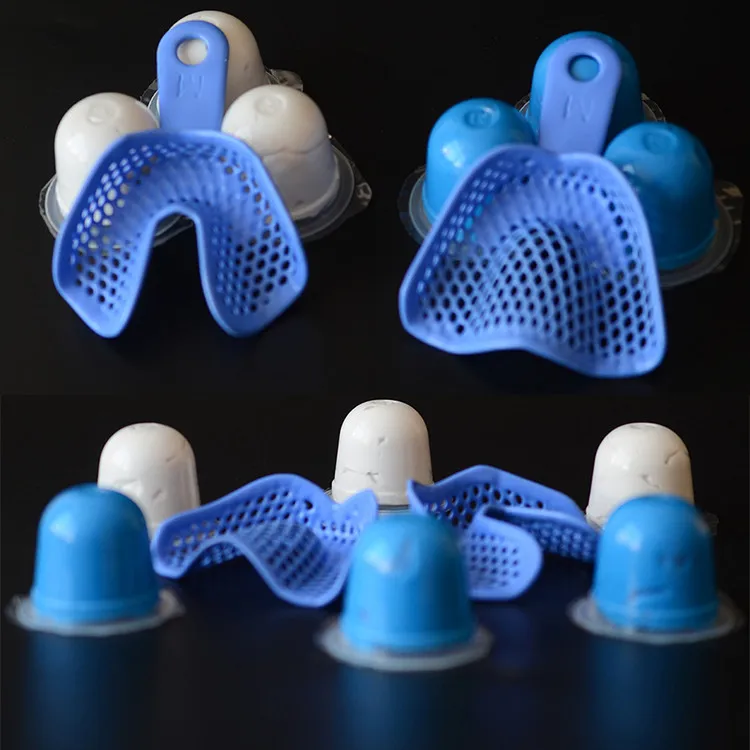

On other occasions and in other branches of dentistry, these terms are used interchangeably. When a positive likeness of the arch or certain teeth is reproduced for orthodontic treatment, it is sometimes described as a model, although the term cast is the more proper term. The positive reproduction of the form of a prepared tooth constitutes a die for the preparation of inlays or fixed dental prostheses. When the positive reproduction takes the form of the tissues of the upper or lower jaw and serves for the construction of dentures, crowns, fixed dental prostheses, and other restorations, it is described as a cast. The accuracy, detail, and quality of this final replica are of greatest importance. The cast is made by filling the impression with dental stone or other model material. When the impression material has set, it is removed from the mouth with the tray. Usually the impression material is carried to the mouth in an unset (plastic) condition in a tray and applied to the area under treatment. Casts of the mouth are used to evaluate the dentition when orthodontic, occlusal, or other problems are involved, and in the laboratory fabrication of restorations and prostheses.įIGURE 12.1 Alginate impression ( A) and gypsum stone cast ( B). An impression and a stone cast made from the impression are shown in Figure 12-1. The impression is a negative reproduction of the tissues, and by filling the impression with dental stone or other model material, a positive cast is made that can be removed after the model material has set. The area involved may vary from a single tooth to the whole dentition, or an impression may be made of an edentulous mouth. Impression materials are used to make an accurate replica or mold of the hard and soft oral tissues. Waxes and dental pattern materials are discussed on the website. Digital impressions are described in Chapter 14.

An understanding of the physical characteristics and the limitations of each material is necessary for their successful use in clinical dentistry. Each of these classes of materials has certain advantages and disadvantages.

Hydrocolloids and synthetic elastomeric polymers are among the materials most commonly used to make impressions of various areas of the dental arch. Impression materials are used to register or reproduce the form and relationship of the teeth and oral tissues. Investment for Casting High-Melting-Point Alloys Hygroscopic-Thermal Gold Casting Investment Thermal and Hygroscopic Casting Investment Setting Expansion of Calcium Sulfate–Bonded Investment Properties of Calcium Sulfate–Bonded InvestmentsĮffect of Temperature on Silicon Dioxide RefractoriesĮffect of Temperature on Calcium Sulfate Binders Water/Powder Ratio of Dental Stone and High-Strength Dental Stone Manufacture of Dental Plaster, Stone, and High-Strength Stone Relationship of Properties and Clinical Applicationĭesirable Qualities of a Cast or Die MaterialĬomparison of Impression and Die MaterialsĬhemical and Physical Nature of Gypsum Products Wettability and Hydrophilization of Elastomeric Impression Materials


 0 kommentar(er)
0 kommentar(er)
